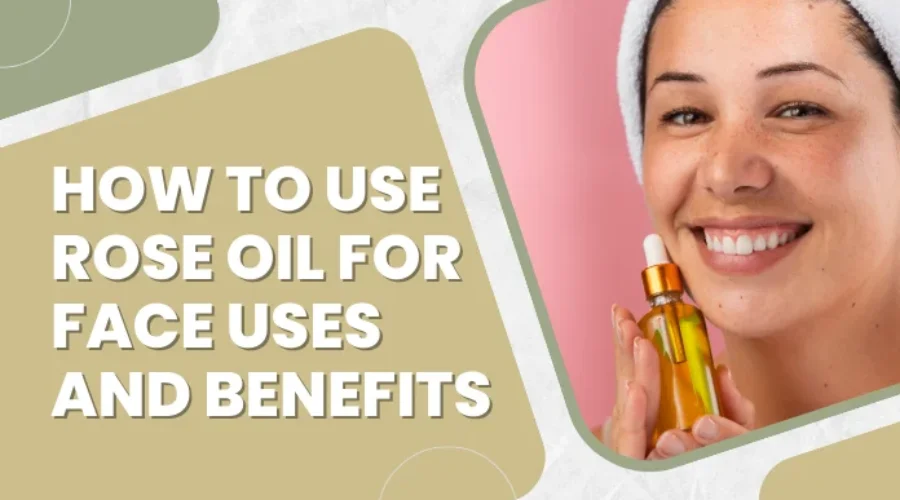How to Use Rose Oil for Face Uses and Benefits
Rose oil has long been cherished for its exquisite fragrance, but it also holds a plethora of benefits for the skin. As a powerful natural ingredient, rose oil has been used for centuries in skincare, specifically as a facial oil or moisturizer. Whether you’re seeking enhanced hydration or smoother skin, incorporating rose oil into your skincare routine can be a game-changer.
In this definitive guide, we will delve into the various uses and benefits of rose oil for the face. We will also provide you with step-by-step instructions on how to leverage the true potential of rose oil in achieving optimal skin health. Additionally, we will explore effective techniques to store rose oil for long-term use.
Why Rose Oil is Beneficial for the Face
Rose oil possesses several qualities that make it a remarkable addition to any skincare routine. Here are some key reasons why rose oil is beneficial for the face:
1. Hydration: Rose oil is a fantastic moisturizer, deeply nourishing the skin and providing long-lasting hydration. It helps to prevent water loss from the skin, keeping it supple, soft, and well-hydrated.
2. Antioxidant Powerhouse: Rose oil contains high levels of antioxidants that combat free radicals, which can damage the skin and accelerate aging. These antioxidants help protect the skin from environmental stressors while promoting a youthful complexion.
3. Anti-Inflammatory Properties: Rose oil has anti-inflammatory properties that can help calm irritated or inflamed skin. It aids in reducing redness and soothing conditions such as rosacea, acne, and eczema.
4. Regenerating and Healing: With its potent regenerative properties, rose oil aids in cellular turnover. That helps in promoting healthier-looking skin by diminishing the appearance of scars and uneven texture over time.
5. Anti-Aging Effects: The unique combination of vitamins A and C present in rose oil helps stimulate collagen production and improve skin elasticity. Regular use of rose oil can reduce the signs of aging, such as fine lines and wrinkles, giving you a more youthful complexion.
6. Balancing pH Levels: Rose oil helps balance the pH levels of your skin. It is suitable for all skin types, whether you have dry or oily skin or fall somewhere in between.
7. Soothing Aromatherapy Benefits: The delightful aroma of rose oil has calming effects on the mind and body. It helps to alleviate stress and uplift mood during skincare rituals.
How Rose Oil is Extracted from Roses

Rose oil, often referred to as “liquid gold,” is a precious extract derived from the petals of roses. Known for its rich aroma and numerous skincare benefits, rose oil has become a popular ingredient in many beauty products. But have you ever wondered how this exquisite oil is extracted?
Rose oil can be extracted through various methods like steam distillation and solvent extraction. Steam distillation is the most common method used to extract essential oils from roses. During this process, steam passes through freshly harvested rose petals contained within a still. As the steam evaporates, it carries with it the aromatic compounds from the petals. They then condense back into a liquid form as they cool down.
Solvent extraction involves using solvents like hexane or ethanol to isolate essential oils from the plant material. However, this method is less commonly used due to concerns about potential residues remaining in the final product.
Step-by-Step Guide to Using Rose Oil for the Face
1. Cleanse and Tone Your Face
Start by cleansing your face with a gentle cleanser to remove any impurities. Follow it up with a toner to balance the pH levels of your skin.
2. Apply Rose Oil
Choose a high-quality rose oil and dilute it with a carrier oil like jojoba or almond oil. Mix a few drops of rose oil with the carrier oil. You can directly take 2-3 drops of rose oil onto your fingertips, too. Now, apply it to your face using your fingertips and gently massage the oil onto your face and neck in upward circular motions. Focus on areas that require extra hydration or have fine lines.
3. Facial Massage
Take some time to perform a facial massage using rose oil. Use upward strokes and light pressure to increase blood circulation and promote relaxation. A facial massage not only allows the oil to penetrate deeper into the skin but also adds to the overall relaxation experience. Pay special attention to areas with tension, dryness, or fine lines.
4. Allow It to Absorb
Give the rose oil some time to absorb into the skin before proceeding with additional skincare steps. This will ensure that your skin fully benefits from its nourishing properties. This step usually takes around 5-10 minutes.
5. Add Moisturizer
Once the rose oil has absorbed into your skin, follow up with your regular moisturizer or facial cream. This will help seal in the moisture provided by the rose oil and provide additional hydration to your skin.
6. Adjust Frequency
Rose oil can be applied once or twice daily, according to individual needs and preferences. It is recommended to start slowly, particularly for those new to using facial oils. Then, you can gradually increase usage if desired results are achieved.
Additional Tips for Using Rose Oil on the Face
a) Patch Test: Before applying rose oil directly on your face, conduct a patch test on a small area of skin to check for any allergic reactions or sensitivity.
b) Quality Matters: Ensure you choose a high-quality rose essential oil sourced from reputable brands to guarantee its effectiveness and safety for use on your face.
c) Carrier Oil Ratio: It is recommended to use a carrier oil such as jojoba or almond oil to dilute the rose oil. The typical ratio for dilution is 2-3 drops of rose oil per teaspoon of carrier oil, but you can adjust this based on your skin’s needs and tolerance.
d) Sun Protection: Rose oil does not provide sun protection. Therefore, remember to apply sunscreen with appropriate SPF after moisturizing your skin.
e) Consistency: As with any skincare regimen, consistency is key. Use rose oil consistently over time to experience its full benefits and achieve healthier-looking skin.
How to Properly Store Rose Oil for Long-Term Use
Choose a dark glass bottle: Transfer your rose oil from its original packaging into a dark glass bottle. Dark glass bottles protect the oil from light exposure, which can degrade its quality over time.
Ensure a tight seal: Make sure the bottle has a tight-fitting cap or stopper to prevent air from entering and oxidizing the oil. Exposure to air can lead to rancidity and loss of fragrance.
Keep away from sunlight and heat: Store your rose oil in a cool, dark place away from direct sunlight and sources of heat like radiators or stovetops. Excessive heat can alter the chemical composition of the oil and reduce its potency.
Maintain consistent temperature: Fluctuations in temperature can affect the quality of rose oil. It is best to store it in an area with a stable temperature, such as a cabinet or drawer.
Avoid exposure to moisture: Moisture can promote microbial growth and degrade the quality of the oil. Ensure your storage area has low humidity levels. Keep the bottle tightly sealed to prevent any water vapor from entering.
Label with date: To keep track of when you purchased or opened the rose oil, label the bottle with the date of purchase or opening. This will help you monitor its shelf life and avoid using expired oil.
Use within recommended shelf life: Rose oil typically has a shelf life of 1-2 years if stored properly. However, its potency may begin to diminish over time, so it is advisable to use it within this period for maximum benefits.
Perform sensory evaluation: Before each use, perform a sensory evaluation by checking for any changes in color, texture, or smell. If the oil becomes cloudy, has an unpleasant odor, or exhibits indications of deterioration, discard it and replace it with a new container.
Avoid contamination: To prevent contamination and maintain the purity of your rose oil, avoid touching the inside of the cap or stopper with your fingers. Instead, pour a small amount into a separate container for immediate use.
Keep out of reach of children and pets: Always store rose oil in a safe place out of reach of children and pets to avoid accidental ingestion or spillage.
Conclusion
Rose oil is a wonderful option for nourishing and rejuvenating the skin. Its hydrating, anti-inflammatory, and collagen-boosting effects make it a powerful skincare supplement. Its anti-inflammatory properties help soothe irritated or inflamed skin conditions such as eczema. The aromatherapeutic qualities of rose oil can uplift your mood, reduce stress levels, and create a calming experience during your skincare routine. Overall, incorporating rose oil into your skincare routine can yield remarkable results for your physical and mental health.



